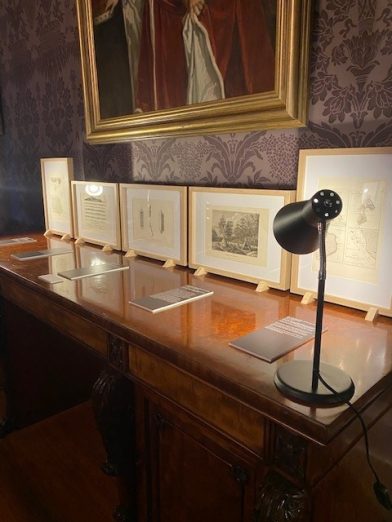A new exhibition drawn from a private collection poses some interesting questions of what may have been the course of Tasmania’s history if the island had been claimed by France.
New Exhibition at Clarendon
The exhibition, Napoleon and Josephine and Terre Van Diemen, is open 4 –26 May at Clarendon as part of the Tasmanian Heritage Festival with its theme of Connections. Located in the most Francophile of Australian country houses and drawn from a significant (and rather gorgeous) private collection, it poses some interesting questions of what may have been the course of Tasmania’s history if the island had been claimed by France.
In 1785, a young 16-year-old officer from Corsica, having just completed his studies at the École Militaire in Paris applied to join an expedition to Terre Australis under the command of the Comte de la Perouse. Despite being shortlisted, he wasn’t chosen for the expedition. The La Perouse expedition arrived at Botany Bay on the 26 January 1788. The expedition departed in mid-March 1788, never to be seen again. That young officer was Napoleon Bonaparte.
How different history would have been without Napoleon’s rise: there would be no French Empire; no ‘Code Napoleon’ (the basis for French law to this day); no Legion of Honour; no infamous invasion of Russia; no Waterloo; no Nelson’s Column in Trafalgar Square; and no order by Napoleon to Captain Nicolas Baudin to travel to Terre Van Diemen in 1800-1804.
Bass Strait had been charted by Bass and Flinders in 1798. The British quickly became aware that Van Diemen’s Land as a separate island may be claimed by a foreign power. French ships in southern waters led to Lieut. John Bowen being dispatched to establish a European colony on the Derwent in 1803.
Amidst the fierce competition between France and Britain for global expansion during the late 18th and early 19th centuries, mapping the largely uncharted Australian coastline bolstered France’s territorial claims. Additionally, Baudin’s mission held significant scientific importance, gathering knowledge on Australia’s natural resources, wildlife and indigenous societies. Napoleon saw the expedition as expanding French influence in the Age of Exploration.
Napoleon’s wife, the Empress Josephine, championed the scientific and cultural achievements of the Baudin expedition. A passionate supporter of the arts and sciences, Josephine supported the publication of a comprehensive account of the voyage, the Voyage de Découvertes aux Terres Australes. Its frontispiece shows her Château de Malmaison with Tasmanian emus, black swans and wallabies.
The exhibition features portraits of Napoleon in paint and marble, a number of Josephine’s personal items, decorative arts in the Empire style and an impressive collection of engravings produced by the expedition’s artist, Charles-Alexandre Lesueur.
The exhibition is open in May only. It is free to National Trust members. Non-members will pay a slightly higher entry (best join the National Trust at the door). Every dollar raised will be a contribution to Clarendon’s renaissance which is currently underway.


















